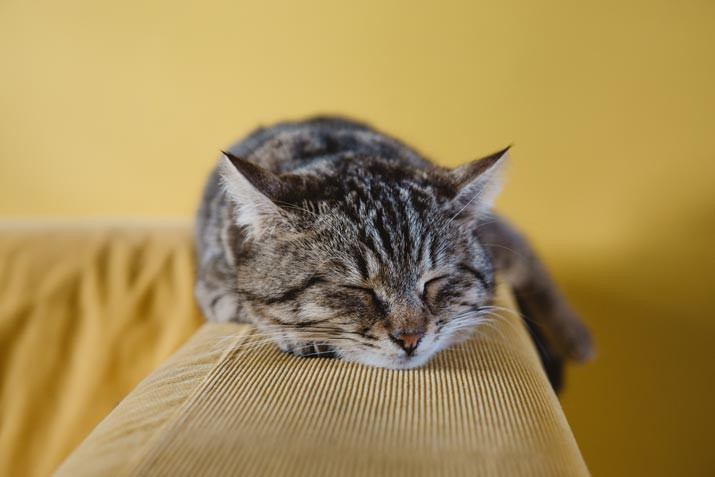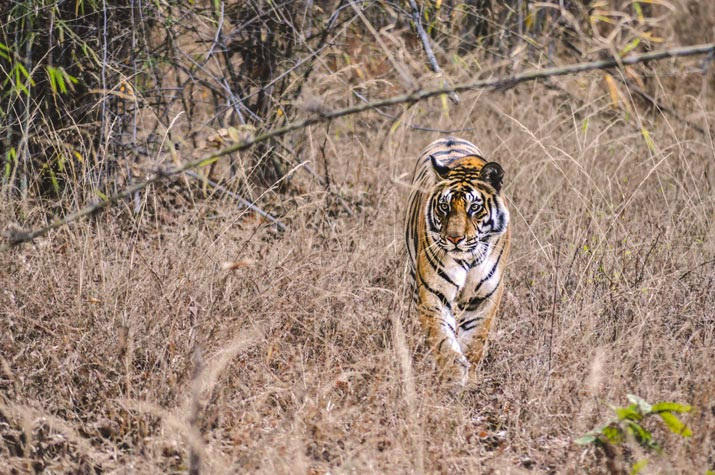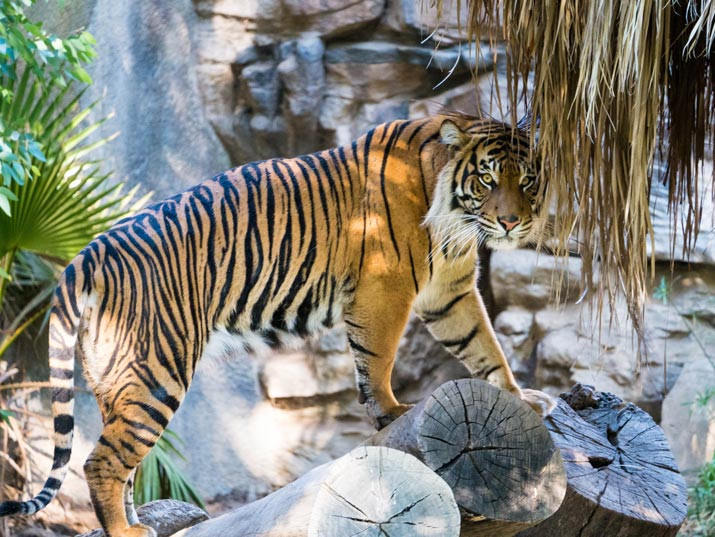Are you curious about the ancestry of your beloved feline companion? The cat family, as explored on solcat.net, encompasses a diverse group ranging from domestic pets to majestic wild cats, all sharing a common lineage and intriguing characteristics. We’ll provide an in-depth look into the fascinating world of felids. Get ready to discover the purr-fect family tree and explore interesting facts about cat breeds, cat care, and other amazing information about cats, only at solcat.net.
1. What Defines the Cat Family?
The cat family, known scientifically as Felidae, includes all species of cats, from the smallest domestic cat to the largest tiger. These animals share a common ancestor and possess distinct characteristics that set them apart.
1.1. What are the Key Characteristics of Felidae?
Felidae, or felines, share several defining traits. According to research from the Cornell Feline Health Center, in July 2025, these traits include flexible bodies, muscular limbs, sharp retractable claws (except for cheetahs), and specialized teeth for tearing meat. Their agility, keen senses, and predatory instincts are hallmarks of the family.
Felines boast exceptional physical characteristics tailored for hunting:
- Flexibility: Their spines are incredibly flexible, allowing for a wide range of motion crucial for agility and balance.
- Muscular Build: Strong muscles provide the power needed for quick bursts of speed and powerful leaps.
- Claws: Retractable claws are essential for gripping prey and climbing, providing a significant advantage in hunting and defense.
- Teeth: Sharp canines and carnassial teeth are designed for efficiently tearing meat, the primary food source for felines.
1.2. What are the Two Main Subfamilies of Felidae?
The Felidae family is divided into two subfamilies: Pantherinae and Felinae. Pantherinae includes the “big cats” like lions, tigers, jaguars, and leopards, known for their roaring ability. Felinae includes smaller cats such as domestic cats, cheetahs, pumas, and lynxes.
| Subfamily | Characteristics | Examples |
|---|---|---|
| Pantherinae | Big cats, capable of roaring, possess a hyoid bone structure that allows it. | Lions, Tigers, Jaguars, Leopards |
| Felinae | Generally smaller, purring cats. | Domestic Cats, Cheetahs, Pumas, Lynxes |
1.3. What Role Did Evolution Play in the Cat Family’s Diversity?
Evolution has played a pivotal role in shaping the diversity of the cat family. Over millions of years, cats have adapted to various environments, leading to the development of unique traits and behaviors.
- Adaptation to Environments: Cats have evolved to thrive in diverse habitats, from dense forests to arid deserts.
- Development of Unique Traits: Different species have developed specialized traits, such as the cheetah’s speed or the snow leopard’s thick fur.
- Behavioral Adaptations: Hunting strategies, social structures, and communication methods have evolved to suit different ecological niches.
2. What are the Notable Members of the Cat Family?
Beyond the familiar domestic cat, the Felidae family boasts a diverse range of species, each with unique characteristics and adaptations. Here are some notable members:
2.1. What Makes Lions Unique in the Cat Family?
Lions (Panthera leo) are unique among cats for their social behavior, living in prides. Male lions are distinguished by their manes, which signal maturity and health. Lions are apex predators in their African savanna habitats.
2.2. How Do Tigers Stand Out in the Felidae Family?
Tigers (Panthera tigris) are the largest cat species, known for their distinctive striped patterns. They are solitary hunters, primarily found in Asian forests and grasslands. Tigers are powerful and adaptable, but face threats from habitat loss and poaching.
2.3. What Are Some Lesser-Known but Equally Fascinating Wild Cats?
The cat family includes many lesser-known but fascinating wild cats. According to the American Animal Hospital Association (AAHA), these include:
- Eurasian Lynx (Lynx lynx): Known for its tufted ears and adaptable nature, thriving in forests across Europe and Asia.
- Cougar (Puma concolor): Also known as the mountain lion, this adaptable cat ranges across the Americas.
- Cheetah (Acinonyx jubatus): The fastest land animal, uniquely adapted for speed with non-retractable claws.
- Ocelot (Leopardus pardalis): A beautifully spotted cat found in the Americas, known for its arboreal lifestyle.
- Margay (Leopardus wiedii): A small, agile cat from Central and South America, known for its ability to climb trees headfirst.
 Eurasian Lynx with tufted ears
Eurasian Lynx with tufted ears
2.4. What Role Does the Black Panther Play in the Cat Family Narrative?
The term “Black Panther” is not a specific species but rather refers to the melanistic (black-coated) variants of several large cat species, most notably leopards (Panthera pardus) in Africa and Asia, and jaguars (Panthera onca) in the Americas. Melanism is a genetic mutation that causes an overproduction of melanin, resulting in a black coat.
- Genetic Mutation: Melanism is caused by a genetic mutation that leads to the overproduction of melanin, the pigment responsible for dark coloration in the skin and fur.
- Camouflage: The black coat provides excellent camouflage in dense forests, giving them an advantage when hunting.
- Adaptation to Environment: Melanism is more common in areas with dense forests where the dark coat helps with camouflage.
3. What About Domestic Cats?
Domestic cats (Felis catus) are among the most popular pets worldwide, beloved for their companionship and playful nature. Domestic cats have a long history of coexisting with humans.
3.1. How Are Domestic Cats Classified Within the Cat Family?
Domestic cats belong to the Felinae subfamily and are classified as Felis catus. They are believed to have descended from the African wildcat (Felis silvestris lybica).
3.2. What Traits Do Domestic Cats Share with Their Wild Relatives?
Despite domestication, domestic cats retain many traits of their wild ancestors. These include:
- Hunting Instincts: Domestic cats still exhibit strong hunting behaviors, such as stalking and pouncing.
- Agility: Their flexible bodies and muscular limbs make them agile climbers and jumpers.
- Sensory Acuity: Keen senses of smell, sight, and hearing help them navigate their environment.
- Grooming Habits: Domestic cats maintain their coats with meticulous grooming, using their tongues to remove dirt and parasites.
3.3. How Has Domestication Changed Domestic Cats?
Domestication has significantly altered domestic cats. These changes are both behavioral and physical.
- Behavioral Changes: Domestic cats tend to be more social with humans and other animals than their wild counterparts.
- Physical Changes: Domestication has led to a variety of breeds with different coat colors, patterns, and body sizes.
- Genetic Diversity: Domestication has increased genetic diversity, resulting in a wide range of breeds with distinct characteristics.
4. What Are the Behavioral Traits of Cats?
Understanding feline behavior is crucial for cat owners. Cats exhibit a range of behaviors influenced by their instincts, environment, and individual personalities.
4.1. Why Do Cats Purr?
Purring is a unique feline behavior that typically indicates contentment or pleasure. However, cats may also purr when they are stressed or in pain as a self-soothing mechanism.
4.2. What Does Cat Communication Entail?
Cats communicate through a combination of vocalizations, body language, and scent marking.
- Vocalizations: Meows, hisses, and growls convey different messages.
- Body Language: Tail position, ear orientation, and posture indicate mood and intentions.
- Scent Marking: Cats use scent glands on their bodies to mark territory and communicate with other cats.
4.3. How Do Cats Establish Territory?
Cats establish territory through scent marking, scratching, and visual displays. Scent marking involves spraying urine or rubbing against objects to deposit pheromones. Scratching serves as a visual and olfactory marker, while visual displays include posturing and staring.
 Cat spraying to mark its territory
Cat spraying to mark its territory
5. What Are the Health and Care Requirements for Cats?
Proper health and care are essential for ensuring the well-being of cats. This includes nutrition, veterinary care, and environmental enrichment.
5.1. What Constitutes a Balanced Diet for Cats?
A balanced diet for cats should be rich in protein, moderate in fat, and low in carbohydrates. Cats are obligate carnivores, meaning they require nutrients found primarily in animal tissues.
5.2. What Veterinary Care Do Cats Require?
Regular veterinary check-ups are crucial for maintaining a cat’s health. These visits should include vaccinations, parasite control, dental care, and screenings for common feline diseases.
5.3. How Should Cats Be Environmentally Enriched?
Environmental enrichment involves providing cats with opportunities to engage in natural behaviors, such as hunting, scratching, and climbing. This can be achieved through toys, scratching posts, climbing structures, and interactive play.
6. What Are the Conservation Status and Threats to Wild Cats?
Many wild cat species face significant threats, leading to conservation concerns. Habitat loss, poaching, and human-wildlife conflict are major challenges.
6.1. What Are the Primary Threats to Wild Cat Populations?
The primary threats to wild cat populations include habitat loss, poaching, human-wildlife conflict, and climate change. Habitat loss reduces the availability of prey and shelter, while poaching targets cats for their fur and body parts.
6.2. What Conservation Efforts Are in Place for Wild Cats?
Numerous conservation organizations are working to protect wild cats through habitat preservation, anti-poaching patrols, community education, and research. These efforts aim to mitigate threats and ensure the long-term survival of wild cat populations.
6.3. How Can People Support Wild Cat Conservation?
Individuals can support wild cat conservation by donating to conservation organizations, advocating for stronger wildlife protection laws, and making sustainable choices that reduce their impact on the environment. Educating others about the importance of wild cat conservation is also crucial.
7. What Are Some Interesting Facts About the Cat Family?
The cat family is full of surprises. From their evolutionary history to their unique adaptations, there’s always something new to discover.
7.1. How Long Have Cats Existed on Earth?
Fossil evidence suggests that the earliest ancestors of modern cats appeared about 25 million years ago. These ancient cats were significantly different from today’s felines but shared key characteristics that link them to the Felidae family.
7.2. What Are the Unique Physical Adaptations of Cats?
Cats have several unique physical adaptations that make them exceptional predators:
- Retractable Claws: Allow for silent stalking and maintain claw sharpness.
- Tapetum Lucidum: A reflective layer in the eye that enhances night vision.
- Flexible Spine: Enables agility and a wide range of motion.
- Sensitive Whiskers: Provide spatial awareness and help navigate in low-light conditions.
7.3. What is the Role of Genetics in Cat Coat Color and Patterns?
Genetics play a crucial role in determining cat coat color and patterns. Genes control the production and distribution of pigments, resulting in a wide variety of colors, patterns, and fur lengths.
8. How Do Zoos and Sanctuaries Contribute to Cat Conservation?
Zoos and sanctuaries play a crucial role in cat conservation through breeding programs, research, and education. These institutions provide safe environments for endangered cats and contribute to the preservation of genetic diversity.
8.1. What Are the Benefits of Breeding Programs in Zoos?
Breeding programs in zoos help maintain genetic diversity and increase the population of endangered cat species. These programs follow strict guidelines to ensure the health and well-being of the animals.
8.2. How Does Research in Zoos Aid Cat Conservation?
Research in zoos provides valuable insights into cat behavior, health, and genetics. This information is used to improve conservation strategies and management practices in the wild.
8.3. How Do Zoos Educate the Public About Cats?
Zoos educate the public about cats through exhibits, educational programs, and outreach activities. These initiatives raise awareness about the threats facing wild cats and inspire people to support conservation efforts.
 Lion at Bali Safari Park
Lion at Bali Safari Park
9. What Role Do Cats Play in Different Cultures and Mythologies?
Cats have been revered and feared in different cultures throughout history, often associated with mystery, magic, and independence.
9.1. What Are the Historical Depictions of Cats in Ancient Egypt?
In ancient Egypt, cats were highly revered and associated with the goddess Bastet, protector of the home and family. Cats were often mummified and buried with their owners to accompany them in the afterlife.
9.2. What Symbolism Do Cats Carry in Various Mythologies?
In various mythologies, cats symbolize independence, mystery, and magic. They are often seen as guardians of the underworld or messengers between the human and spiritual realms.
9.3. How Do Cats Feature in Modern Literature and Art?
Cats continue to feature prominently in modern literature and art, often portrayed as enigmatic and independent characters. They are celebrated for their grace, beauty, and unique personalities.
10. How Can You Learn More About Cats and Contribute to Their Well-Being?
There are many ways to learn more about cats and contribute to their well-being. From reading books and articles to volunteering at animal shelters, every action counts.
10.1. What Resources Are Available for Cat Owners?
Numerous resources are available for cat owners, including books, websites, and veterinary professionals. These resources provide information on cat care, behavior, and health. For reliable and updated information, visit solcat.net.
10.2. How Can You Support Cat Welfare Organizations?
You can support cat welfare organizations by donating, volunteering, or fostering cats in need. These organizations provide essential services, such as rescuing, sheltering, and rehoming cats.
10.3. What Are Some Misconceptions About Cats?
There are several misconceptions about cats. One is that they are aloof and independent. Another is that they don’t need as much attention as dogs. These myths can lead to neglect and misunderstanding of feline behavior.
FAQ: Frequently Asked Questions About the Cat Family
Here are some frequently asked questions about the cat family, addressing common curiosities and concerns.
1. Are domestic cats related to tigers?
Yes, domestic cats are related to tigers. Both belong to the Felidae family, but they are in different subfamilies. Tigers are in the Pantherinae subfamily, while domestic cats are in the Felinae subfamily.
2. What is the difference between a panther and a leopard?
A panther is not a distinct species but a term used for melanistic (black) variants of several big cat species, most commonly leopards and jaguars. Leopards are typically spotted, but melanistic leopards appear black due to a genetic mutation causing excess melanin production.
3. Do all cats purr?
Not all cats purr. Big cats in the Pantherinae subfamily, such as lions and tigers, cannot purr. They have a different vocal structure that allows them to roar instead.
4. What is the lifespan of a domestic cat?
The average lifespan of a domestic cat is 12-15 years, but some cats can live much longer with proper care and nutrition. Indoor cats typically live longer than outdoor cats due to reduced exposure to dangers.
5. Are cats nocturnal?
Cats are crepuscular, meaning they are most active during dawn and dusk. They have excellent night vision due to a reflective layer in their eyes called the tapetum lucidum.
6. What is the best way to train a cat?
Positive reinforcement is the best way to train a cat. This involves rewarding desired behaviors with treats, praise, or toys. Consistency and patience are key to successful cat training.
7. How often should I take my cat to the vet?
You should take your cat to the vet for annual check-ups and vaccinations. Kittens and senior cats may require more frequent visits. Contact your vet immediately if you notice any signs of illness or injury.
8. What are the signs of a healthy cat?
Signs of a healthy cat include a shiny coat, bright eyes, good appetite, and normal behavior. A healthy cat should be alert, active, and free from any signs of illness or discomfort.
9. Can cats and dogs live together?
Yes, cats and dogs can live together peacefully with proper introduction and socialization. It’s important to introduce them gradually and provide separate spaces for each animal.
10. What is the best way to groom a cat?
The best way to groom a cat depends on its coat type. Short-haired cats benefit from weekly brushing, while long-haired cats require daily grooming to prevent mats and tangles. Regular nail trimming and dental care are also important.
Conclusion
Understanding what family cats are in provides valuable insights into their behavior, health, and conservation needs. By exploring the diverse world of felids, we gain a greater appreciation for these fascinating creatures and their role in the natural world. Learn more about feline friends at solcat.net.
Ready to dive deeper into the captivating world of cats? Head over to solcat.net today and explore our extensive collection of articles, images, and videos. Whether you’re a seasoned cat owner or simply curious about these amazing animals, solcat.net is your go-to resource for everything feline. Join our community of cat lovers and discover the purr-fect blend of information and entertainment! Find out more about Cat breeds, Cat behavior, and Cat care on solcat.net!
Address: 950 Alaskan Way, Seattle, WA 98104, United States
Phone: +1 (206) 386-4000
Website: solcat.net
